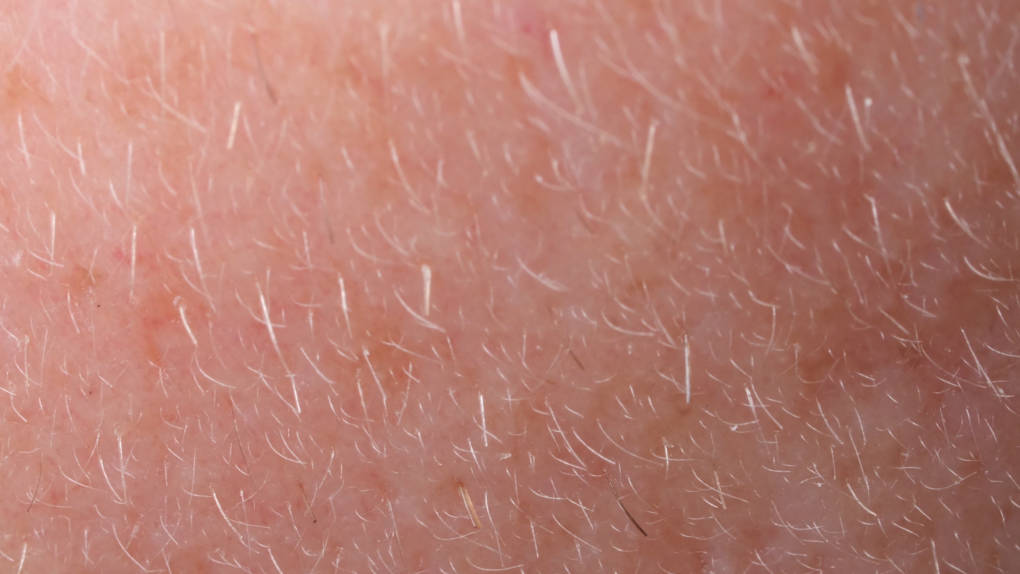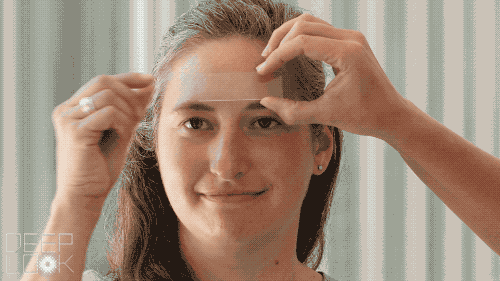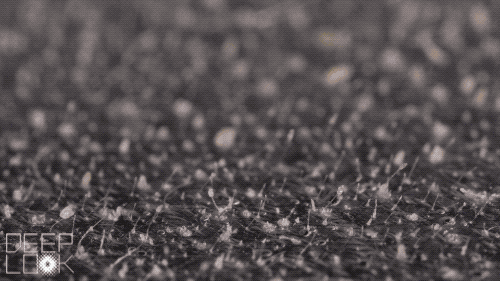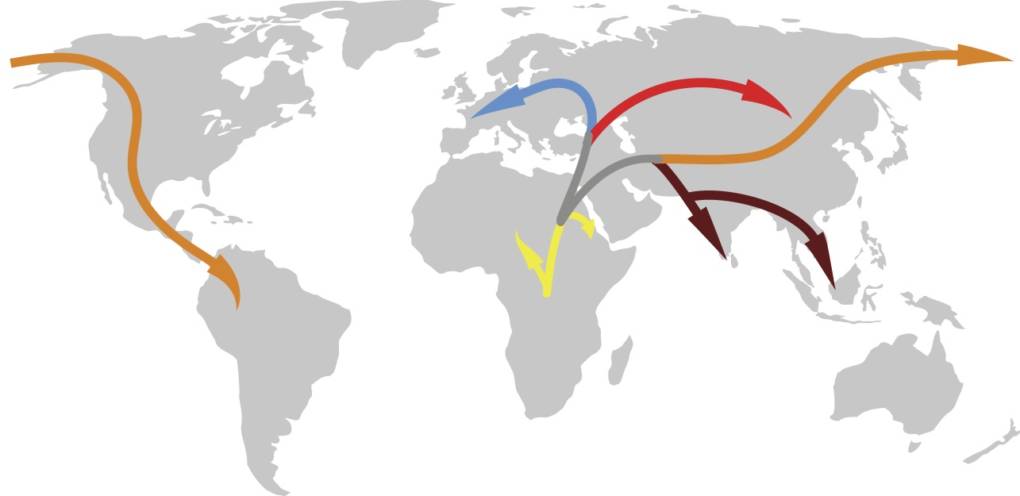I hate to break this to you, but you almost certainly have tiny mites living in the pores in your face right now.
They’re called Demodex. And pretty much every adult human alive has a population of these mites living on them.
Also called eyelash mites, they’re too small to see with the naked eye. They’re mostly transparent, and at about .3 millimeters long, it would take about five face adult mites laid end to end to stretch across the head of a pin.
“They look like kind of like stubby little worms,” said Michelle Trautwein, an entomologist at the California Academy of Sciences in San Francisco.
Trautwein studies our relationship with these microscopic stowaways by looking at their DNA. Her findings so far show that people in different parts of the world have different face mites living in the skin.
“They tell a story of your own ancestry and also a story of more ancient human history and migration,” said Trautwein.

“We use a little spoon and scrape it across the kind of greasier parts of someone’s face — which isn’t as bad as it sounds,” said Trautwein.
Once she has collected the samples, she takes them back to the lab to look at the genetics.
Trautwein has found DNA evidence of face mites on every one of more than 2,000 people she has tested, including tourists from all around the world who make their way to the California Academy of Sciences.
“No one is thrilled at the initial notion that they have arachnids on their face,” Trautwein said. “But people are often curious — even in their revulsion.”
But how could these creatures live on so many people and still go unnoticed?

Look closely and you’ll see that in addition to the more obvious body and head hair, human skin is covered in a thin, barely visible layer of peach fuzz called vellus hairs. There are a few notable exceptions, such as the palms of our hands and soles of our feet, but other than that our entire bodies are covered in that fuzz. The shaft of each one of those tiny hairs grows out of its own follicle.
Face mites spend their days face-down inside your hair follicles nestled up against the hair shaft.
They eat sebum, that greasy oil your skin makes to protect itself and keep it from drying out. The sebum is produced in sebaceous glands, which empty into the hair follicles, coating both the hair shaft and face mites.
That’s why the greasiest parts of your body — like around the eyes, nose and mouth — likely harbor a higher concentration of mites than other areas.
They live about two weeks. They spend most of their time tucked inside our pores. But while we’re sleeping, they crawl out onto the surface of our skin to mate before crawling back into our pores to lay their eggs. Fun!
Since they live inside your pores, you can’t scrub them off by washing. It’s basically impossible to get rid of all of your face mites.
So how does Trautwein study them? With glue.

“I actually put glue on a glass microscope slide and stick it onto a person’s forehead,” she said. “Then I slowly peel it off. I look under a microscope for mites that are stuck in the follicles that stick up from the thin layer of skin that got peeled off.”
“It can be pretty addictive and exciting,” she added. “It’s sort of a meditative process of looking through this microforest of follicles and hairs, and looking for just the right potential movement or shape.”

These Demodex face mites got their name from the Greek words for “fat” and “boring worm,” but they’re not really worms at all. They’re actually arachnids — related to ticks — and more distantly to spiders.
Most people have face mites on them and never notice. It seems that our immune system is able to keep their numbers in check. But some people can experience problems with them.
“When you tell patients that they have face mites, first of all, they freak out,” said Dr. Kanade Shinkai, a dermatologist at UCSF.
Shinkai occasionally treats patients who have an overload of face mites, which results in a condition called demodicosis.
“There is a very particular look to people suffering from demodicosis. We call it the Demodex frost,” she said. “It’s sort of a white sheen on the skin. And if you look really closely, you can see coming out of every pore. If you scrape those pores, you can see it frothing with little Demodex face mites.”
It’s a pretty rare condition and it’s often connected to a change in someone’s immune system, such as receiving immunosuppressive drugs after transplant surgery, chemotherapy or immunodeficiency diseases like HIV.
Demodicosis can also be triggered by local suppression of the immune system, like when itch-relieving hydrocortisone cream is used on the face.
When it does happen, demodicosis usually comes on fast.
“Patients almost universally describe this explosive development of pustules like whiteheads on their face. It’s really dramatic,” Shinkai said. “And what’s really dramatic about it is that they’re often fine the day before, and then they develop it, overnight.”
But for the vast majority of people, face mites are nothing to worry about. While some studies have found loose connections between Demodex and diseases like rosacea, the evidence hasn’t shown a strong link.
“What’s really confusing is that if you go into your office and scrape everyone’s face, you would find Demodex probably on everybody,” Shinkai said. “And people who have low burden of Demodex may have no or very severe disease and vice versa.”
Trautwein also sees face mites as more of a source of interest than fear.
“They’re not dangerous in a broad sense because we all have them and most of us seem to be cohabiting quite well with them,” Trautwein said. “We mostly share them within family units and it seems like you are probably initially colonized soon after birth, most likely by your mother, traditionally speaking in human history.”
Looking at these mites, researchers like Trautwein can usually tell something about your geographical ancestry — what part of the world your ancestors came from.

“Face mites are definitely the species of animal that we have the closest connection with as humans, even though most of us don’t know about them or ever see one in our lifetime,” she said. “We still have this very ancient and intimate relationship, and it seems clear that we’ve had these face mite species with us for all of our history. So they are as old as our species, as old as homo sapiens.”
